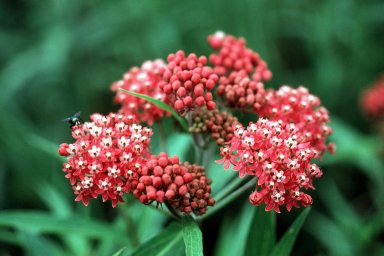Detail View: Kansas Wildflowers: Asclepias incarnata L.

|
Catalog Number:
|
6624
|
|
Record ID:
|
KBS_LARC.6624_1200.Asc_inc1.tif
|
|
Global Unique Identifier:
|
URN:science:KBS:wildflower:6624
|
|
Institution Code:
|
KBS
|
|
Date Last Modified:
|
12/16/2004
|
|
Basis Of Record:
|
observation
|
|
Scientific Name:
|
Asclepias incarnata L.
|
|
Family:
|
Asclepiadaceae
|
|
Genus:
|
Asclepias
|
|
Species:
|
incarnata
|
|
Scientific Name Author:
|
L.
|
|
State or Province:
|
Iowa
|
|
County:
|
Bremer
|
|
Locality:
|
Sumner, 0.7 mi N, 0.5 mi E. North Woods County Park; A.F. Miller Nature Preserve. Fen on E side of Little Wapsipinicon River.
|
|
Physiographic Province:
|
Iowan Surface
|
|
Associated Plant Community:
|
Fen
|
|
Collector:
|
Craig C. Freeman
|
|
Date Collected:
|
5/28/1994
|
|
Rights:
|
Craig C. Freeman
|
|
Source:
|
Kansas Wildflowers Database, Kansas Biological Survey, University of Kansas
|
|
Genus Name Meaning:
|
Named for Asklepios, Greek god of medicine
|
|
Species Name Meaning:
|
flesh pink-colored
|
|
Common Names:
|
Swamp milkweed
|
|
Description:
|
Height: 5 - 25 dm
|
|
Description:
|
Species description: Flowers are pale to deep pink and bloom from July to August.
|
|
Description:
|
Species description: Erect perennial herb with milky sap. Stems are mostly solitary from a stout base and may be branched above. Leaves are mostly opposite and simple.
|
|
Description:
|
"Habitat: Marshes, wet prairies, and along the banks of streams, river, and ponds."
|
|
Description:
|
Range in Kansas: Throughout the state.
|
|
Description:
|
Edible uses: Flower buds can be cooked; flower clusters can be boiled to make a sweet syrup or used in soup. Young shoots can be cooked like asparagus; tips of older shoots can be cooked like spinach.
|
|
Description:
|
"Medicinal Uses: Tea made from roots used to expel worms, induce vomiting, or as diuretic/laxative"
|
|
Description:
|
Other uses: Fibers from stems can be used in twine or clothing. Seed fibers can be used to stuff pillows or combined with other materials to make cloth. Seed fibers used in life jackets because of their water-repellent properties.
|
|
Description:
|
Notes: Flowers attract butterflies; plants host Monarch butterfly larvae
|
|
Description:
|
Warnings: Plants can irritate skin in humans. Milky sap is toxic.
|
|
Description:
|
Cultivation: Grows best in well-drained moist soil in full sun. Will adapt to drier soils.
|
|
Description:
|
Propagation: Seed--plant in fall or early spring. Division--not very successful but can be done in spring. Cuttings--basal shoots taken in late spring.
|
|
Color:
|
Pink
|
|
Description:
|
Plant life form: Perennial
|